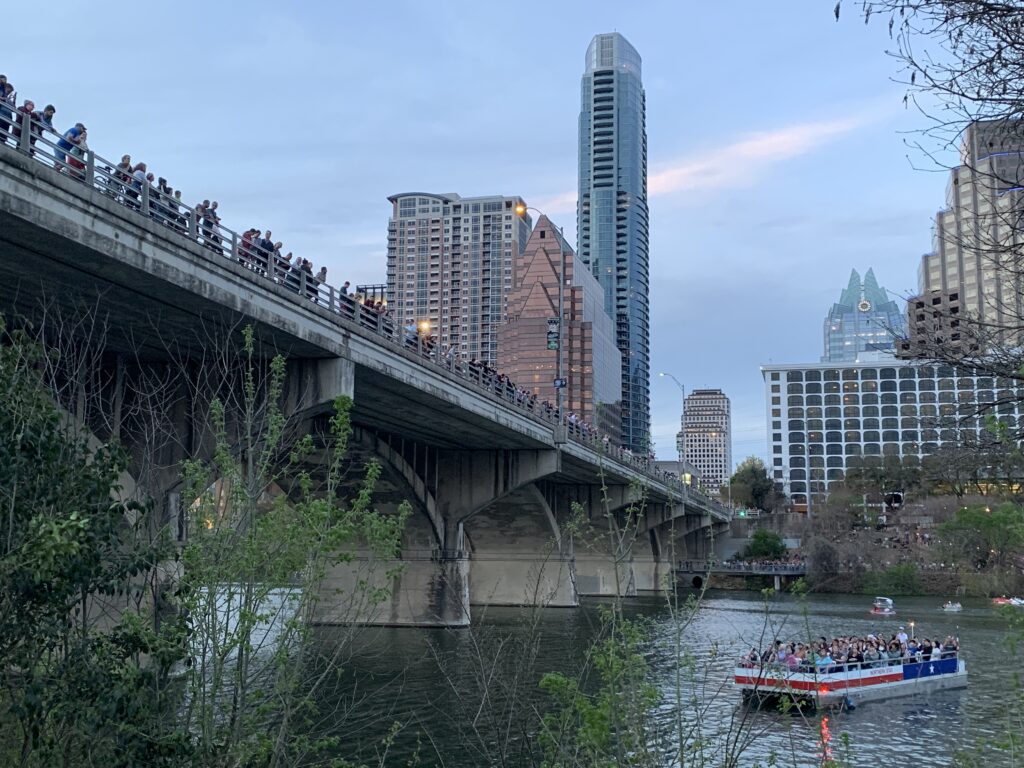Austin, the capital of Texas is located about 195 miles south of Dallas. The Colorado River runs right through the city. We spent a day here visiting a few sights starting with the Capitol building.
Texas State Capitol building – The massive three-story sunset red Texas granite structure is one of the largest capitol building in the United States, standing 14 feet higher than the U.S. Capitol building. It is home to the office of the State Governor and the Chambers of the Texas Legislature.
The building was completed in 1888 and today is protected as a National Historic Landmark. Free guided tours are available all 7 days of the week. You can also tour the capitol building on your own with a free self-guided tour pamphlet. The Capitol ground is huge with trees and beautifully landscaped lawns.

The Capitol Rotunda is one of the most impressive in the building. The circular room provides entrance to all parts of the capitol. The Rotunda showcases the interior dome which rises 218 feet from the floor. A huge sheet metal star, measuring 8 feet from point to point, surrounded by lettering that spells out “TEXAS” anchors the top.


The first floor of the rotunda features the Great Seal of the Republic of Texas. Installed in 1936 to commemorate 100 years of statehood, the floor design includes the seals of the 6 nations that have governed Texas.

The Senate Chamber – Treasured works of art hang throughout the Chamber on the second floor of the Capitol. The many portraits that line the walls of the Chambers depict key figures in Texas history.

House of representative room – House of Representatives also features works of art of great importance to preserving the legacy of Texas. Like the portraits in the Senate, the art in the House features many notable Texans and figures in Texas history.




Lady Bird Lake – This Lake is a river-like reservoir on Colorado River in Austin named after the wife of President Lyndon Johnson. This flowing reservoir covers 416 acres and has become one of the city’s top recreation areas.
Although lined with hotels and residential complexes, the majority of its shoreline is open to the public, with miles of excellent trails for pedestrians and cyclists. The main pedestrian path along the shores is the Ann and Roy Butler Hike and Bike Trail and Pedestrian Bridge, which crosses the river and connects downtown Austin with the southern shore.
See the Bats from Congress Avenue Bridge – One of Austin’s most interesting and unique thing to do is watching the flight of the Mexican free-tailed bats in the evening. These bats which live under Ann W. Richards Congress Avenue Bridge take to the sky at dusk each evening from March through November. The bats put on an impressive show as more than a million of them fly from beneath the bridge and up to two miles high in massive formations so they can dine on mosquitoes, moths, grasshoppers, and other flying pests. It can take up to 45 minutes just for the fuzzy mammals to all exit their home.

There are many vantage points from which to enjoy the sight, with the area surrounding the bridge the most popular. Others enjoy watching from boats on Lady Bird Lake or from the Statesman Bat Observation Center, which sits at the southern end of the bridge.
Mount Bonnell – Located in Covert Park, this is the highest point in the city of Austin at a height of 781 feet and provides a gorgeous view of Austin and the Colorado River. The peak is named in the honor of George Bonnell, who served as Commissioner of Indian Affairs for the Texas Republic. Although the lookout deck and pavilion are at the top of 102 stairs, it is not a steep or strenuous climb.


McKinney Falls State Park – About 10 miles south of Austin, this park is at the confluence of Onion Creek and Williamson Creek and has hiking and biking trails as well as waterfalls. The main hiking trail is the 2.8-mile Onion Creek Hike and Bike Trail.



